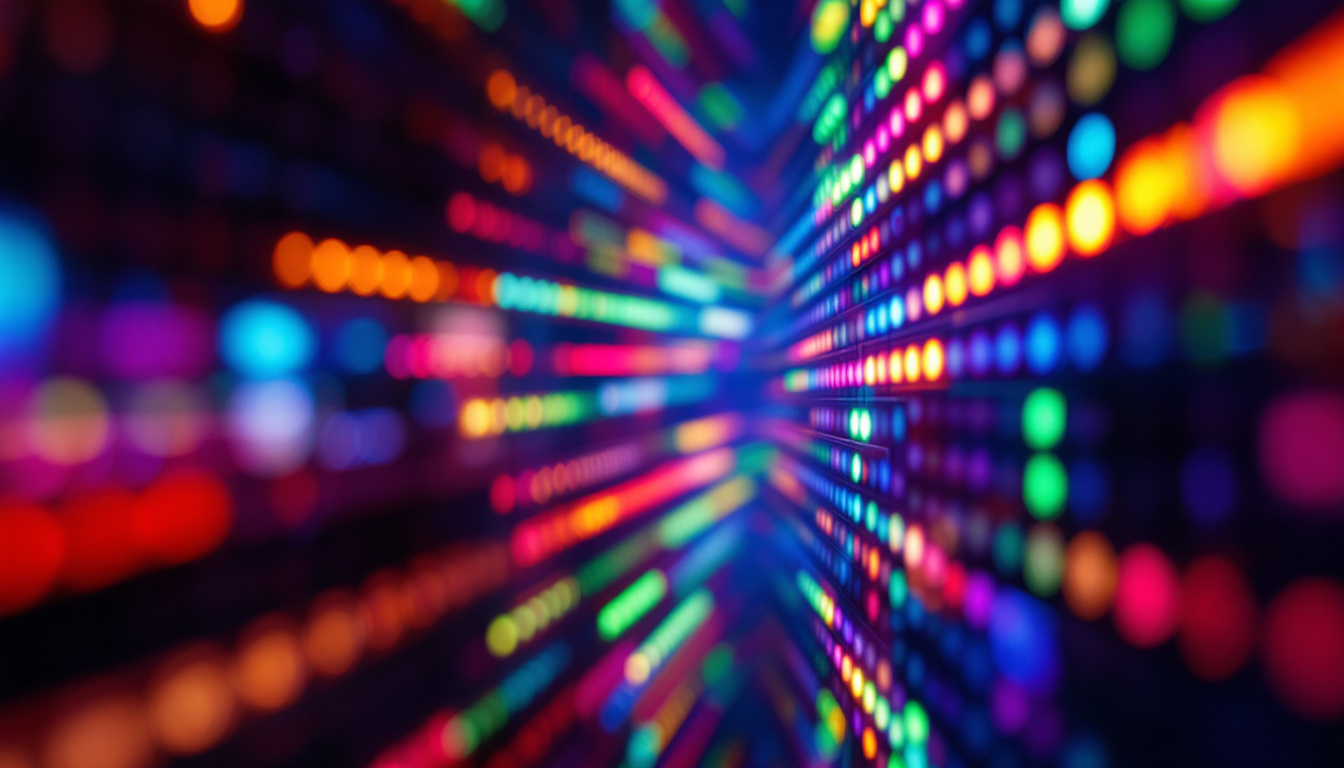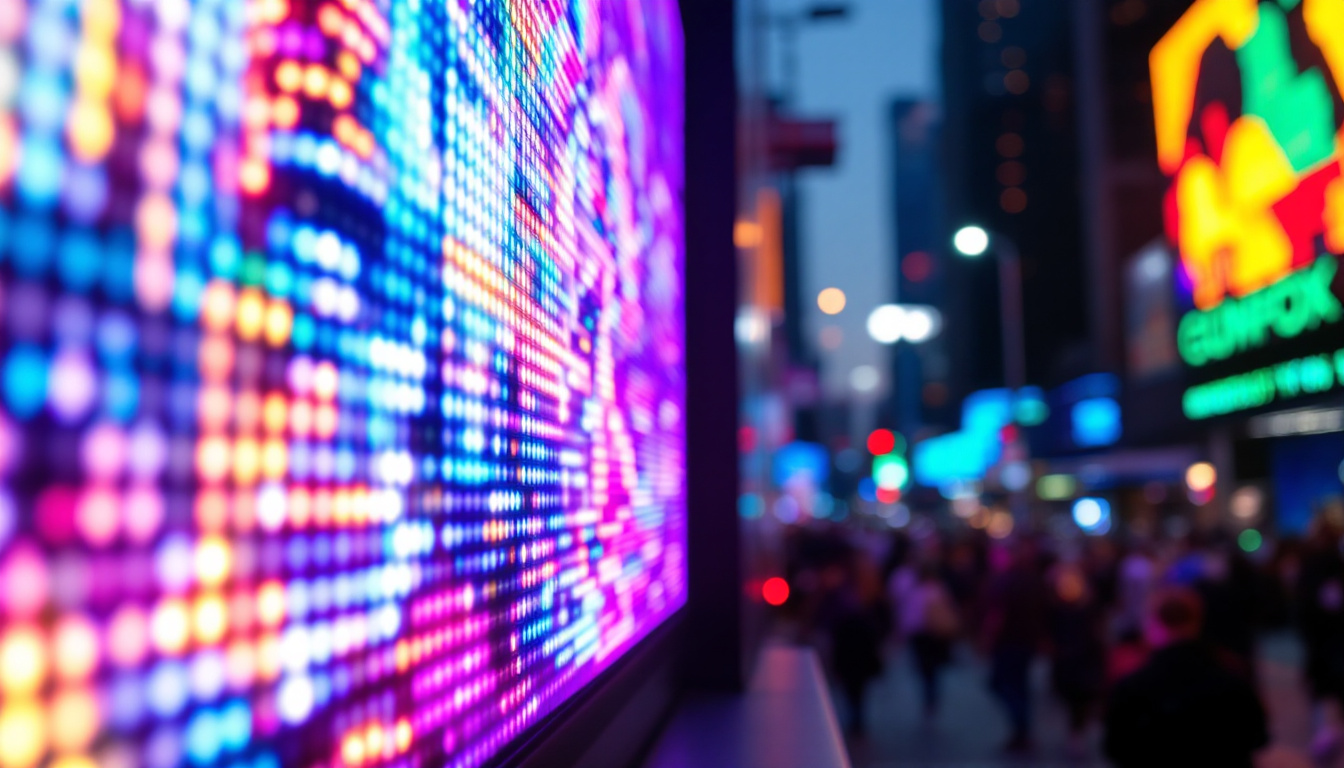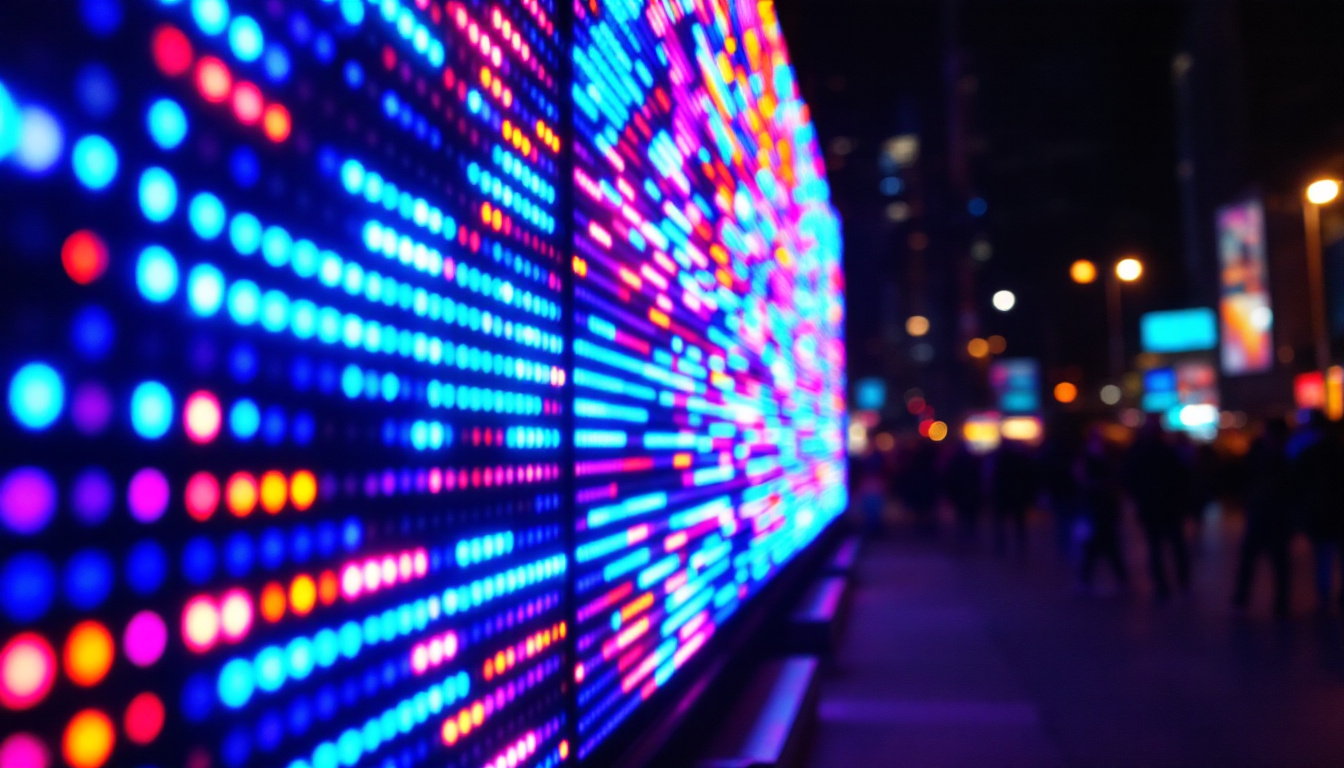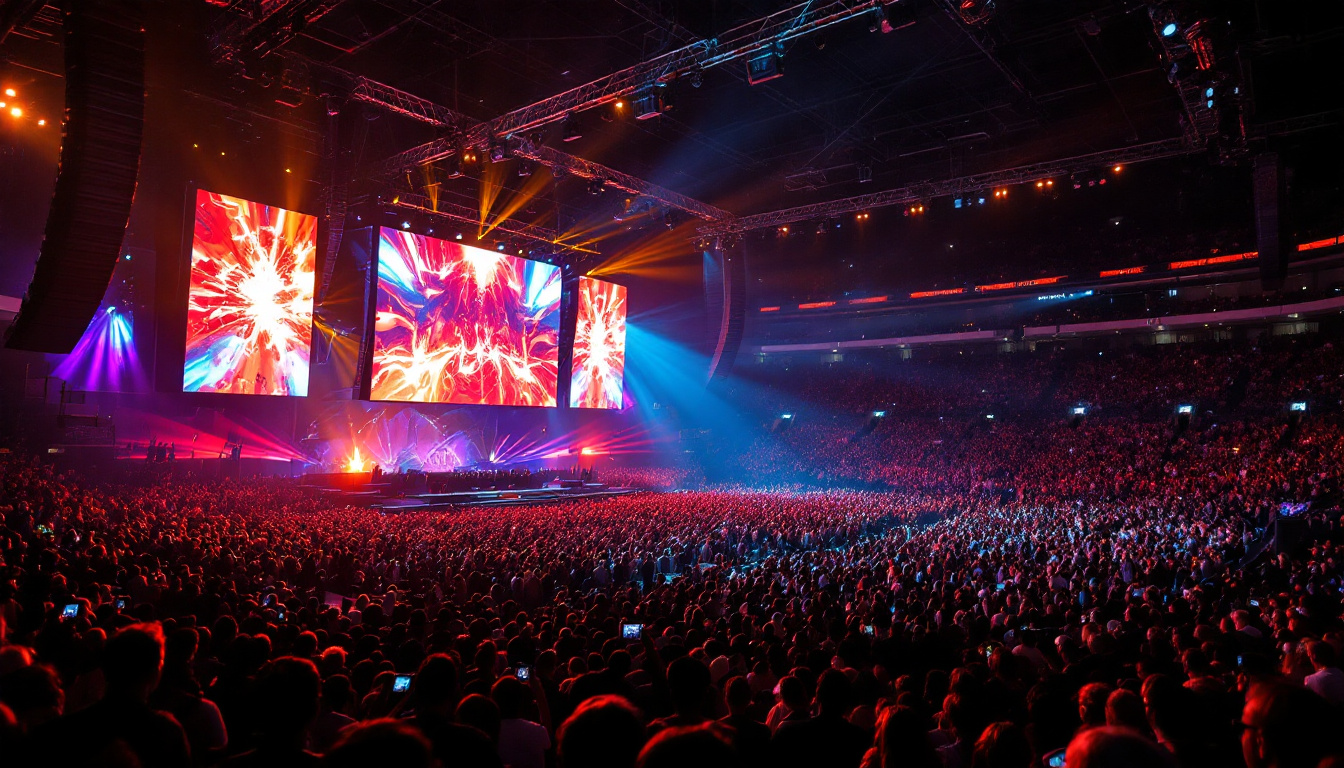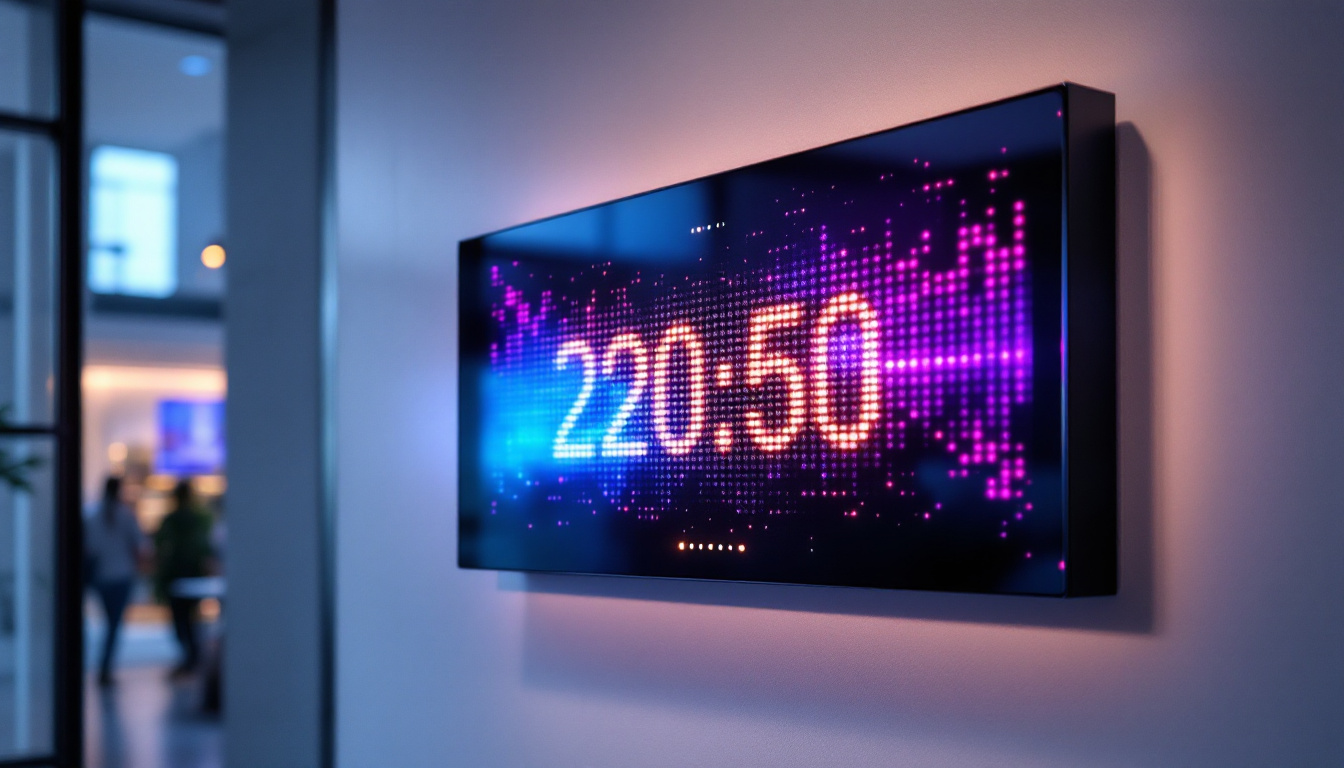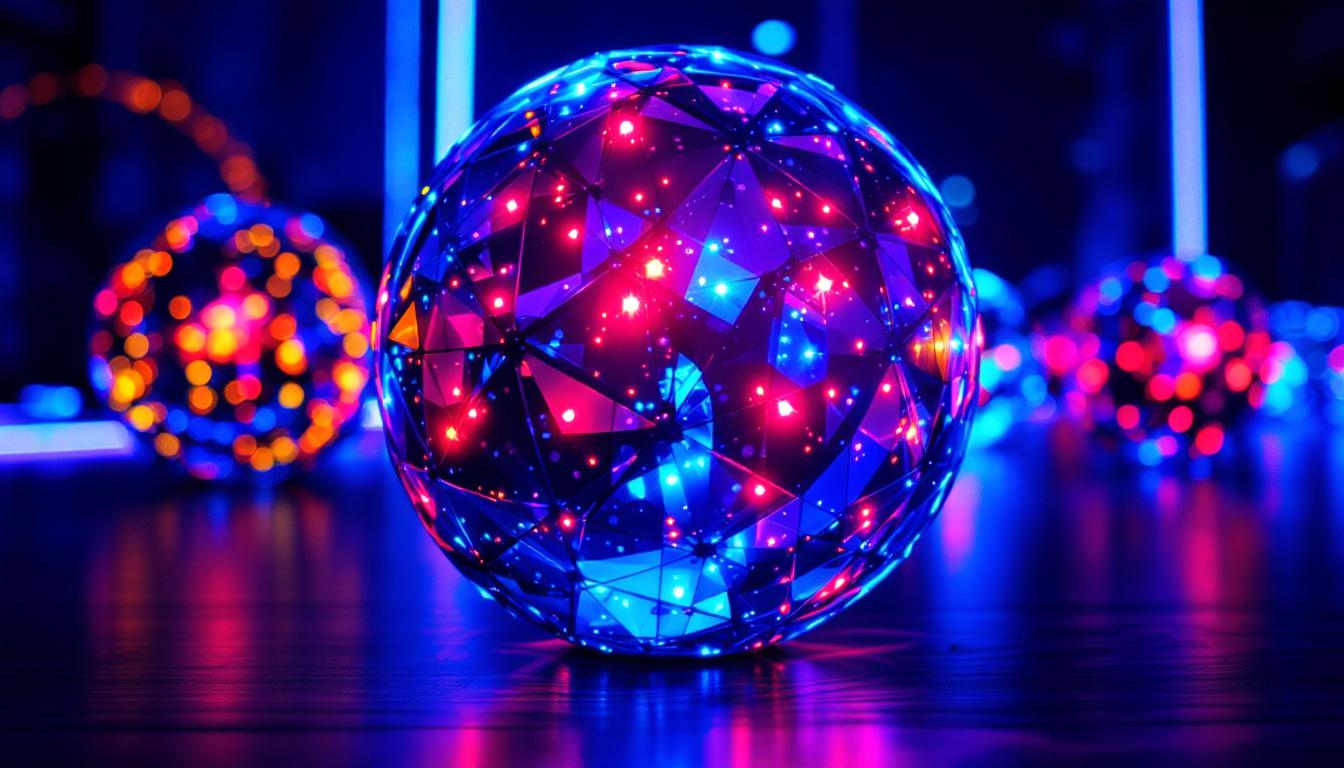In the realm of modern technology, LED displays have become ubiquitous, serving as the backbone for everything from televisions to smartphones. Understanding the underlying principles that govern these displays can provide valuable insights into their operation and performance. One of the mathematical tools that can help in this understanding is the concept of power series representations. This article delves into the relationship between power series and LED displays, exploring how these mathematical constructs can elucidate the behavior of light-emitting diodes.
Understanding LED Displays
LED (Light Emitting Diode) displays utilize semiconductor technology to produce light when an electric current passes through them. These displays are known for their energy efficiency, brightness, and versatility. The basic unit of an LED display is the pixel, which is composed of individual diodes that emit red, green, or blue light. By combining these colors in varying intensities, a full spectrum of colors can be generated, allowing for rich and vibrant images.
Components of LED Displays
At the core of an LED display, several components work together to create the final image. The primary components include:
- LEDs: These are the actual light sources that emit light when energized.
- Driver Circuits: These circuits control the power supplied to the LEDs, allowing for precise brightness and color adjustments.
- Control Systems: These systems manage the data input and ensure that the correct signals are sent to the driver circuits.
Each of these components plays a critical role in ensuring that the display operates effectively and efficiently. The interplay between them is where the mathematical principles, such as power series, come into play.
How LEDs Produce Light
The operation of an LED is based on the principle of electroluminescence, where electrons recombine with holes in a semiconductor material, releasing energy in the form of photons. This process can be described mathematically, and power series can help model the behavior of the light emitted based on various factors such as voltage and current.
Understanding the relationship between voltage and current is crucial for optimizing LED performance. Power series can represent the current-voltage characteristics of LEDs, allowing engineers to predict how changes in voltage affect the current flowing through the diode, and consequently, the brightness of the light emitted.
Power Series: A Mathematical Overview
A power series is an infinite series of the form:
f(x) = a0 + a1x + a2x2 + a3x3 + …
where an are coefficients and x is a variable. Power series are particularly useful in approximating functions and can converge to a function within a certain radius of convergence. This mathematical tool finds applications in various fields, including physics and engineering.
Applications of Power Series
Power series have a wide range of applications, particularly in areas that require function approximation. Some notable applications include:
- Calculating Functions: Power series can approximate functions like sine, cosine, and exponential functions, providing a means to compute values that may be difficult to derive directly.
- Signal Processing: In signal processing, power series can model signals and their transformations, aiding in the design of filters and other systems.
- Control Systems: Engineers use power series to analyze and design control systems, particularly in systems that require feedback and stability analysis.
In the context of LED displays, power series can be particularly useful in modeling the response of the display to various input signals, thereby enhancing the design and functionality of the display systems.
Convergence and Divergence
One crucial aspect of power series is the concept of convergence. A power series converges if the sum of its terms approaches a finite value as more terms are added. Conversely, it diverges if the sum does not settle to a finite limit. Understanding the convergence of a power series is essential for its practical application, as it determines the range of values for which the series can be used effectively.
In the context of LED displays, engineers must ensure that the power series used to model the current-voltage relationship converges within the operational range of the LEDs. This ensures accurate predictions of performance and aids in the optimization of display characteristics.
Linking Power Series to LED Performance
The relationship between power series and LED performance can be illustrated through the mathematical modeling of the current-voltage characteristics of LEDs. This relationship is crucial for understanding how LEDs respond to different input signals and how they can be controlled to achieve desired brightness and color outputs.
Modeling the I-V Characteristics
The current-voltage (I-V) characteristics of an LED can be modeled using a power series expansion. The general form of the I-V relationship can be expressed as:
I(V) = I0 + a1V + a2V2 + a3V3 + …
where I is the current flowing through the LED, V is the applied voltage, and I0 is the reverse saturation current. The coefficients an represent how the current changes with respect to voltage.
This power series representation allows engineers to predict how the LED will behave under different voltage conditions, enabling them to optimize the design for specific applications, such as high-brightness displays or low-power devices.
Brightness Control and Dimming
One of the significant advantages of using power series in modeling LED behavior is the ability to control brightness and dimming effectively. By adjusting the input voltage, the current flowing through the LED can be manipulated, which directly affects the brightness of the emitted light.
Power series can help determine the optimal voltage levels for achieving desired brightness levels, allowing for smooth dimming transitions and energy-efficient operation. This capability is particularly beneficial in applications such as television displays, where varying brightness levels can enhance the viewing experience.
Practical Considerations in LED Display Design
While the theoretical foundations of power series and LED operation are essential, practical considerations must also be taken into account during the design and implementation of LED displays. Factors such as thermal management, color calibration, and power efficiency play a crucial role in the overall performance of the display.
Thermal Management
LEDs generate heat during operation, which can significantly impact their performance and lifespan. Proper thermal management strategies are necessary to ensure that the LEDs operate within safe temperature limits. This can involve the use of heat sinks, fans, or other cooling mechanisms to dissipate heat effectively.
Mathematical modeling using power series can aid in predicting the thermal behavior of LEDs under different operating conditions, allowing designers to implement effective cooling solutions. By understanding how temperature affects the I-V characteristics, engineers can optimize the performance and longevity of the display.
Color Calibration
Color accuracy is critical for LED displays, especially in applications such as digital signage and television broadcasting. Power series can assist in modeling the color output of LEDs based on their driving currents and voltages, enabling precise color calibration.
By analyzing the color output through power series representations, engineers can adjust the driving signals to achieve the desired color balance and consistency across the display. This ensures that the displayed images are vibrant and true to life, enhancing the overall viewing experience.
Power Efficiency
As energy efficiency becomes increasingly important in modern technology, optimizing the power consumption of LED displays is essential. Power series can help model the relationship between power input and light output, allowing for the identification of optimal operating conditions.
By using power series to analyze the efficiency of different driving strategies, engineers can develop solutions that minimize energy consumption while maintaining high brightness levels. This is particularly relevant in large-scale LED installations, where power savings can lead to significant cost reductions.
Future Trends in LED Display Technology
The LED display industry is continuously evolving, with advancements in technology leading to new possibilities and applications. As the demand for higher resolution, larger displays, and more efficient systems grows, the role of mathematical modeling, including power series representations, will become increasingly important.
MicroLED and OLED Technologies
Emerging technologies such as MicroLED and OLED (Organic Light Emitting Diode) are pushing the boundaries of display performance. These technologies offer improved contrast ratios, faster response times, and better color accuracy compared to traditional LED displays. Power series modeling will be essential in optimizing the performance of these new technologies and ensuring they meet the demands of modern applications.
Integration with Smart Technologies
As LED displays become more integrated with smart technologies, such as IoT (Internet of Things) devices, the need for sophisticated control systems will increase. Power series can aid in the development of algorithms that manage the interaction between displays and connected devices, enhancing functionality and user experience.
By leveraging mathematical modeling, engineers can create smarter, more responsive displays that adapt to user preferences and environmental conditions, paving the way for the next generation of LED technology.
Conclusion
Power series representations provide a powerful mathematical framework for understanding and optimizing LED display technology. By modeling the current-voltage characteristics of LEDs, engineers can predict performance, enhance brightness control, and improve energy efficiency. As the industry continues to evolve, the integration of advanced mathematical tools will be crucial in driving innovation and meeting the demands of modern applications.
In summary, the intersection of mathematics and technology is evident in the world of LED displays. By harnessing the power of power series, engineers can unlock new possibilities, ensuring that LED displays remain at the forefront of visual technology for years to come.
Discover Cutting-Edge LED Technology with LumenMatrix
Ready to experience the future of visual communication? LumenMatrix is at the forefront of LED display innovation, offering a wide array of solutions tailored to your needs. From captivating Indoor LED Walls to dynamic Outdoor LED Displays, and from versatile Vehicle LED Displays to sleek LED Poster Displays, our technology is designed to make your brand stand out. Explore our LED Sports Displays, interactive Floor LED Displays, Custom LED solutions, All-in-One LED Displays, and transparent LED options. Embrace the revolution in digital signage and let LumenMatrix help you create unforgettable visual experiences. Check out LumenMatrix LED Display Solutions today and see your message come to life with unparalleled clarity and impact.

